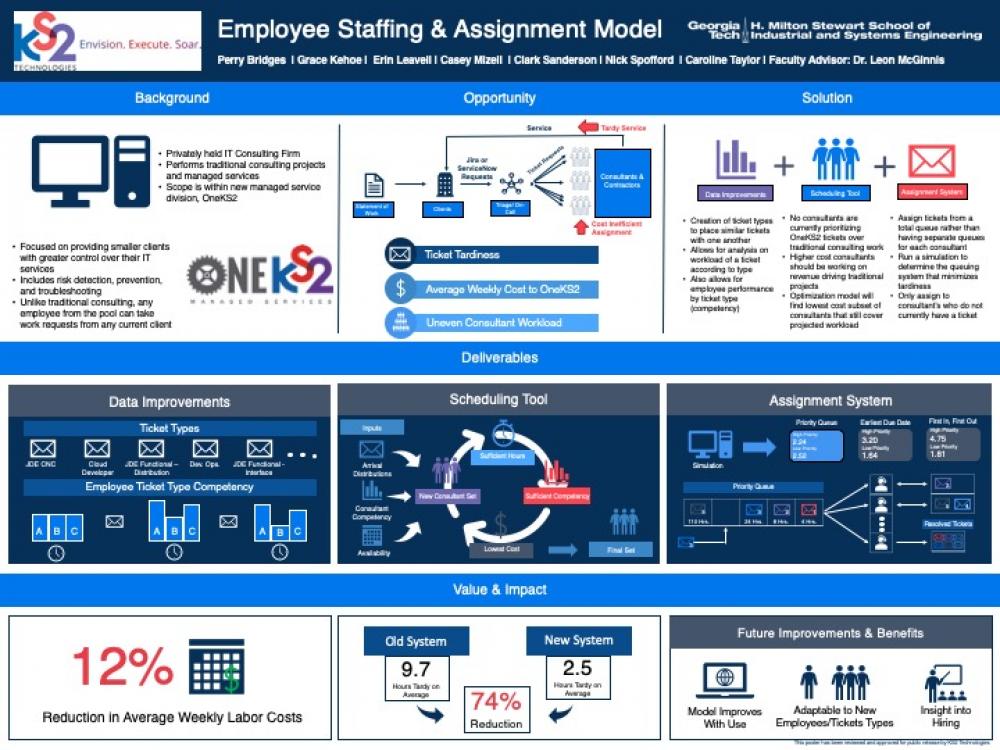Client Context
KS2 Technologies is an IT consulting firm with two major departments: Traditional Projects and OneKS2 Managed Services. The traditional projects have consultants working on one main project at a time, typically for a larger client. The focus of this project is the other major department, OneKS2. OneKS2 offers smaller clients greater control over their IT services, focusing on risk detection and prevention mainly through the completion of client submitted work orders known as tickets. The process requirements for these tickets including priority, deadline, and IT system are outlined in an agreed-upon statement of work before project engagement.
Project Objective
The current system has the potential for multiple areas of improvement including uneven consultant utilization, a high frequency of tardy tickets using more contractors than in-house consultants, and experienced consultants that should be working on KS2 issues spending too much time on OneKS2 tickets. The opportunities for improvements in this system include: (1) balancing the workload of consultants, (2) minimizing the cost of consultants and contractors by allocating the appropriate resources to OneKS2, and (3) reducing the average tardiness of tickets. These opportunities have been addressed through data process improvements, a dynamic scheduling tool, and a ticket assignment system.
Design Strategy
The data process improvements include categorizing incoming tickets by their work content, called a ‘ticket type’, assigning a skill level or ‘competency’ score to each consultant by ticket type, and improving the way that billed hours per ticket are tracked. These improvements will make the proposed scheduling and assignment tool more accurate over time and allow KS2 to track consultant progress. The scheduling tool uses a set covering model to determine which consultants will prioritize OneKS2 tickets. The tool will take in the arrival distribution of each ticket type, the competency level of each consultant, and the availability of each consultant to output subsets of consultants that will minimize the cost while covering the workload. As tickets arrive, they will go into a single ticket queue based on ticket priority and only be assigned when there is an available consultant.
Deliverables
The competency scoring and scheduling aspects of the solution will be delivered to KS2 in the form of a python coded graphical user interface (GUI). Through this interface, KS2 will have the ability to add new employees, calculate and track competency scores for their employees/ contractors, view the recommended employees to schedule and plot the tradeoff between probability and cost of each group of consultants. A document detailing the recommended Priority queue and how to implement it will be provided. The document describes the steps managers should take when choosing which tickets to assign first and which consultant to assign the ticket to based on competency and availability. The future recommendation is to consolidate all client ticketing systems, which will simplify the automation of ticket assignments per the instructions provided. In addition to creating ticket types and corresponding competency scores, KS2 has been provided with a document of recommendations to improve their data collection processes.


